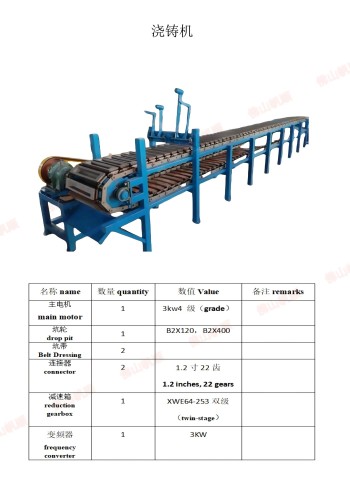Melting Furnaces
Function: Melts the raw aluminum and copper materials into molten metal. Separate furnaces may be used for each metal due to their differing melting points (660°C for aluminum, 1,085°C for copper).Melting furnaces can be induction melting furnace, gas-fired melting furnace, or electric arc melting furnace depending on the production scale, efficiency, and energy source.
Holding Furnaces
Function: Maintains the molten aluminum or copper at a stable temperature for casting. It helps ensure the metal remains molten until it’s ready to be poured.Separate holding furnaces for aluminum and copper may be used due to different handling requirements.
Refining Systems
Function: Purifies the molten metal by removing impurities such as gas bubbles, oxides, and other contaminants to ensure a high-quality ingot.
Techniques:
Aluminum: Rotary degassing, flux treatment.
Copper: Oxygen blowing, slag removal.
Casting Machines
Pour molten aluminum or copper into molds to create ingots.
Semi-automatic or fully automatic casting machines.
Continuous casting machines may be used for high-volume production.
Cooling Systems
Rapidly cools the cast ingots to solidify the molten metal. Aluminum ingot and copper ingot have different cooling requirements, so specific cooling systems are designed for each.Air or water-cooled systems.
Molds
Determines the shape and size of the Aluminum ingot and copper ingot can be cast into various ingot sizes and shapes depending on industrial requirements.Permanent metal molds or sand molds.
De-molding and Handling Systems
Removes the solidified ingots from the molds and transports them for further processing or stacking.
Stacking and Packaging Systems
Automatically stacks the ingots for transportation or storage.

Loading: Scrap aluminum, aluminum alloys, or primary aluminum materials are loaded into the melting furnace.
Melting: The materials are heated to 660°C until they melt.
Refining: The molten aluminum is purified using rotary degassing or flux injection to remove impurities and improve quality.
Holding: The refined aluminum is transferred to a holding furnace, maintaining the molten state for casting.
Casting: The molten aluminum is poured into molds through a casting machine, forming ingots.
Cooling: Rapid cooling solidifies the aluminum ingots.
De-molding: Solidified aluminum ingots are ejected from the molds.
Stacking and Packaging: The finished aluminum ingots are stacked and prepared for shipping.
Loading: Copper scrap, copper alloys, or primary copper is fed into the melting furnace.
Melting: Copper is heated to 1,085°C until it melts.
Refining: The molten copper undergoes refining, often involving slag removal and oxygen blowing to remove impurities.
Holding: The refined molten copper is held in a holding furnace to maintain temperature stability for casting.
Casting: Molten copper is poured into molds, creating ingots.
Cooling: Air or water cooling rapidly solidifies the copper ingots.
De-molding: The solid copper ingots are removed from the molds.
Stacking and Packaging: Copper ingots are stacked and packaged for transportation.
aluminum and copper ingot production line plays a vital role in converting raw aluminum and copper materials into high-quality aluminum ingots and copper ingots,that are essential for various industries. This dual-metal production capability, combined with automated, efficient processes, makes the line an essential tool for manufacturers aiming for consistent, high-quality output. The line's adaptability to both metals ensures it can meet the demands of industries like automotive, aerospace, electronics, and construction.